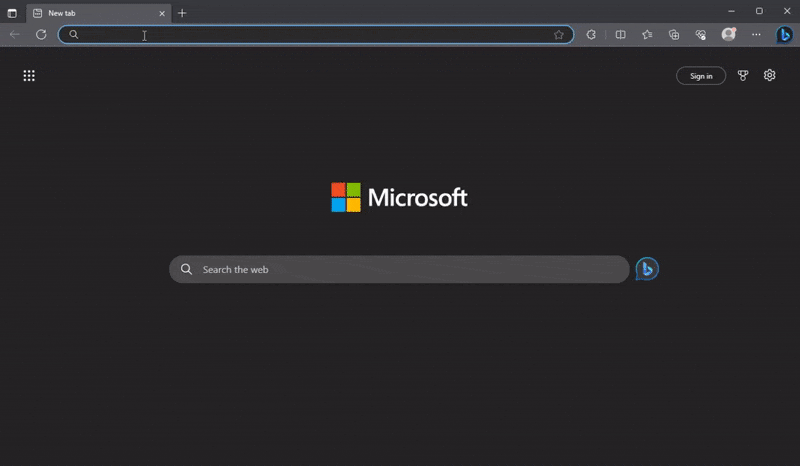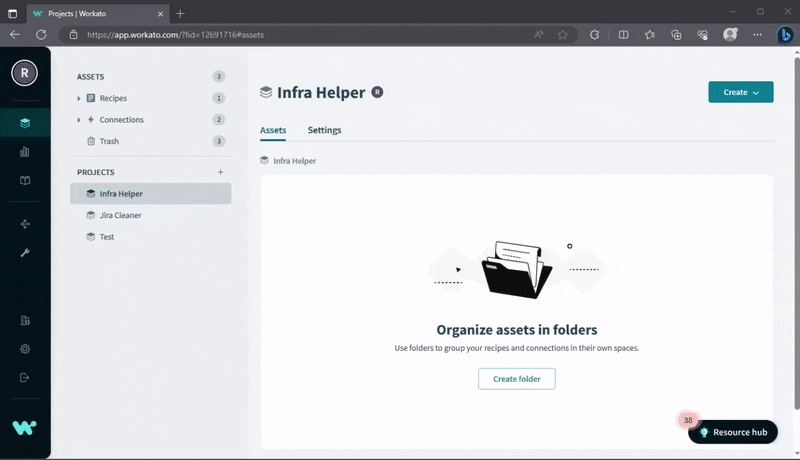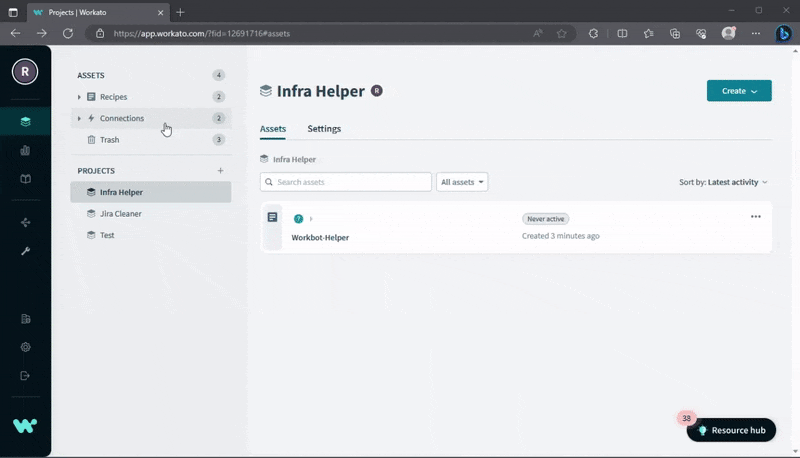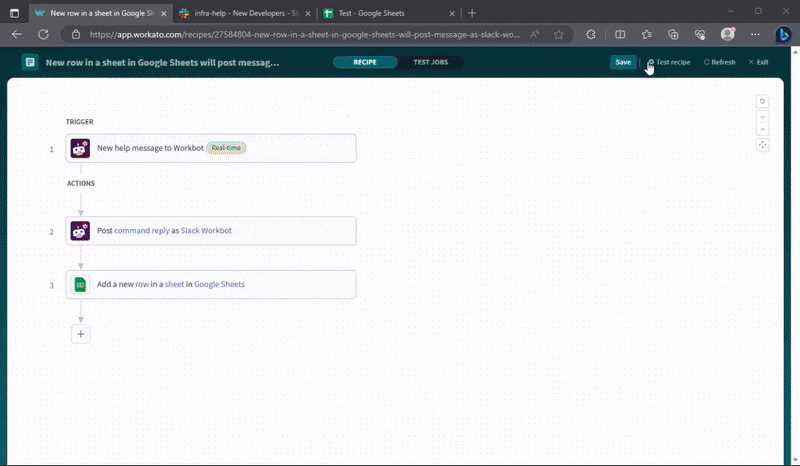Last year, coworkers at my workplace introduced me to Workato. Since then, I've been consistently immersing myself in the platform, actively exploring its different features. In this article, I'll elucidate the core principles of Workato and provide insights into how newcomers can start their journey with the platform.
Ready? Let's get cracking! 🚀
What is Workato?
Workato is a cloud-based automation platform that enables businesses to build, deploy, and manage automation and integration solutions across different applications and data sources.
Built on the foundation of iPaaS and designed with a user-friendly interface, Workato makes it easy for users to connect their preferred business applications. This empowers organizations to simplify their business processes, resulting in improved efficiency and productivity.
This integration becomes achievable through Workato's low-code development approach, supported by its foundational prebuilt connectors. In addition to that, Workato also offers an extensive collection of over 500K ready-to-use recipes for common business processes which can be tailored to align with our requirements.
Why Workato?
In addition to saving you money and time, here are a few reasons why you should consider Workato for your business:
🌟 Seamless Integrations: Workato provides thousands of ready-to-use connectors, making it easy for businesses to seamlessly integrate them into their favorite apps. Additionally, Workato allows us to create and use custom connectors using the Ruby programming language, which makes it a versatile solution for businesses seeking tailor-made connections to fit their unique needs.
🌟 Low Code Development: Workato is a low-code platform with drag-and-drop functionality, enabling users to design integrations and workflows intuitively. This approach facilitates the creation of customized solutions without the need for extensive coding expertise, making automation accessible to a wider range of users from different backgrounds.
🌟 Real-time Data Sync: Workato's real-time data synchronization guarantees that your connected applications always have up-to-date information. This enhances data accuracy and consistency, ensuring that your operations are based on the most current insights.
🌟 Robust Reporting and Analytics: Workato offers comprehensive reporting and analytics via dedicated built-in dashboards. These dashboards provide users with insights into tasks, workflows, and other aspects, therefore aiding in the identification of areas where enhancements can be made.
🌟 AI and ML Integrations: Workato also offers support for integrating AI and machine learning into workflows, contributing to a further enhancement of overall process efficiency.
🌟 Thriving Community Engagement: Workato has a vibrant community of users and experts who actively collaborate, share insights, and provide solutions, ensuring you have valuable support and guidance throughout your integration journey.
Having explored the compelling reasons to choose Workato, let's now dive into how to get started with it 👇
How to get started?
🈺 Business Teams: If you are ready to supercharge your workflows with Workato, reach out to Workato sales teams for a demo and they can help you get started.
⌨️ Developers: If you're a student, developer, or someone intrigued by the possibilities of this tool, read on for more insights 👇
🥪 What are Recipes?
In Workato, recipes refer to pre-built automation workflows that connect various applications and systems. These recipes are designed to streamline processes and tasks by automating actions, triggers, and data transfers between different platforms. In essence, they offer a clear roadmap for establishing integrations and automation, all without the need for advanced coding skills.
Simply put, a recipe is a set of straightforward instructions meant to be executed within the target application like create, update, delete, etc.
🔍 Components of a Recipe
A recipe has 2 main components:
🔸 Triggers: A trigger decides when to start the recipe. It's like the on-switch for automation, marking the beginning of the process. These events could be things like scheduled actions or actions in other apps. These triggers initiate the pre-established recipes, creating smooth connections between apps and systems, and ultimately streamlining workflows and tasks for increased efficiency.
🔸 Actions: An action determines the steps that a recipe should perform in the target application. When events trigger automation, actions get done. Once a trigger activates, actions do tasks like updates and data transfers, keeping processes smooth and information flowing fast and accurately across systems.
🛠️ Building a Recipe
Recipes are built based on business requirements. Workato's intuitive interface simplifies the creation and modification of recipes, making the process effortless. Plus, Workato offers a vast library of prebuilt recipes, allowing users to leverage ready-made solutions before creating custom ones.
In this demo, we'll create automation that triggers whenever a help message related to infrastructure is posted in a Slack channel.
💡 This could be enhanced to include ServiceDesk integration but, I'm keeping it simple for the demo.
Steps:
Set up your new Workato account: Sign up for a new account.

Set up a new project: Go to the Projects tab and click on the Create project button to get started.

Set up your new recipe: Create a new recipe, provide a meaningful name to it (related to your automation) and select the starting point. In this example, we're going to select Slack help message as the trigger.

Establish connections with your applications: This requires you to sign in to your applications like Google and Slack. Once a connection is created for an application, it can be reused across multiple recipes.

Build your workflow: Get creative by utilizing recipe data from various applications, referred to as data pills in Workato, which can be compared to variables in traditional programming.

Test your workflow: Test your workflow to know it's doing the hustle.

👏 Congratulations, you've now built your first Workato recipe!
📌 Kindly remember that this serves as a basic demo to aid your understanding of Workato's fundamental functionality. This tool offers far greater capabilities, so be sure to incorporate necessary changes like including null checks and validations wherever they are needed.
Now that you've built your first recipe, let's learn some key concepts:
🔸 Trigger Conditions: These are extra rules that decide which trigger events to use. For instance, in our case, only messages starting with "help" will trigger automation. There are different conditions that we can set for a trigger depending on the target application.
🔸 Data Mapping: Workato simplifies data mapping by allowing you to match fields between different apps effortlessly, ensuring seamless and accurate information transfer during integrations. Workato's connectors interpret the data schema in the connected applications and automatically give us the fields for data mapping.
🔸 Formula Mode: Formula mode helps us to apply custom calculations and logic to data within your workflows for advanced operations. For instance, in our example, we have used the formula now + 1.days to add 1 day from the existing time as the ETA.
🔸 Error Handling and Alerts: Workato provides strong error management. Set up alerts for errors like API issues or data mismatches. This ensures reliable automation by taking corrective actions when needed.
🔸 Job Management Dashboard: Workato offers an in-built dashboard displaying job statuses, subscription types, connections, and the dependency graph, which is a visual tool showing how different parts of your automation are connected, helping you see the workflow's flow and dependencies.
There's more to discover, but this should give you a good overall understanding to get started.
What's next?
Congratulations on creating your first recipe! You've gained insights into how Workato functions. If you are interested to learn more about this wonderful tool, check out the Automation Pro 1 course at Workato Academy.
To get a solid understanding of the tool, roll up your sleeves and get your hands dirty by creating more sample recipes. This hands-on experience will significantly deepen your knowledge and familiarity with the platform's new features.
Conclusion
In conclusion, Workato 101 introduces efficient automation. With a user-friendly interface and low code development approach, it empowers users to streamline workflows, save time, and boost productivity.
With Workato in my toolkit, I discovered a new passion for creating streamlined workflows and optimizing repetitive tasks, empowering me to take my development skills to new heights and I hope it does the same for you.
Thanks for reading the article. Please give it a like and share it with your friends. Got any questions? Let me know!
Cheers 👋

